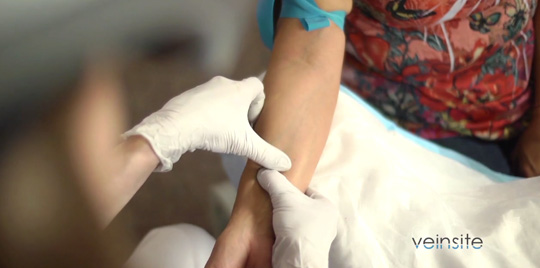How Robotic Technology is Changing the Surgery Experience
March 9, 2017By: Mari Rydings
Categories: High Tech

Robotic surgery celebrated a milestone recently when it hit double-digits. Ever since their inception over a decade ago, the use of doctor-controlled robots during surgeries has continued to grow. Advances in the technology allow surgeons to perform an expanded range of complicated procedures with more precision.
Gerald Y. Park, MD, a urologist with Kansas City Urology Care, performed North Kansas City Hospital’s first robotic procedure, a prostatectomy, on March 30, 2006. “North Kansas City Hospital was the first hospital North of the River to perform robotic-assisted surgeries, and it continues to be ahead of the curve,” Dr. Park said.
High Tech
North Kansas City Hospital surgeons use a da Vinci robotic surgical system to perform complex procedures with a minimally invasive approach. A mini camera gives the surgeon a high-definition view inside the body. Tiny, flexible doctor-controlled surgical instruments offer better precision and control.
“Robotic technology is a more sophisticated way to do laparoscopic surgeries,” Dr. Park explained. “Since it’s 3-D, I can make one small incision and perform fine, complex movements in areas that would be more difficult with open surgery. I have more control in tight spaces, where it can be difficult to see.”
Patrick E. McGregor, MD, a general surgeon with Meritas Health Surgery & Trauma, began repairing hernias robotically in March 2016. He has performed 35 such surgeries in the past year and more than 200 robotic surgeries during in his medical career. “Today, nearly 25% of all hernia repairs are performed with robotic technology,” he said. “In my experience, the most significant patient outcome between repairing a hernia robotically versus laparoscopically is the patient’s post-operative pain level.”
Robotic Surgery: A Brief History
In 2000, when surgical robots were first introduced, surgeons performed just 1,000 robotic surgeries worldwide. By 2014, that number had grown to 570,000. Today, robotic technology is used in gynecological, general surgical, colorectal and thoracic procedures.
Patient Benefits
For patients, the minimally invasive nature of robot-assisted surgeries translates into faster recovery times, reduced complication rates, lower wound infection rates, shorter hospital stays, decreased pain and scarring, and less blood loss.
Robotic technology can also make a procedure technically easier. For example, in the past, surgeons used a laparoscopic approach only on patients with bilateral hernias because the dissecting balloon divided both sides of the hernia, making the approach too aggressive for a single-sided hernia. With robotic-assisted surgery, surgeons can address each side separately because they control the dissection.
Open to Everyone
Ten years ago, robotic-assisted surgery was reserved for people within the range of a normal body weight or who had not had any previous surgeries. Technological advances have made it an option for almost everyone.
“We can offer robotic surgery to almost every patient referred by a primary care doctor,” Dr. Park said.
If the current pace of technological advancements in robotic technology stays on par with the previous 10 years, it will be interesting to see what the future holds.
Learn more about North Kansas City Hospital’s multidisciplinary surgical team and their specialties.


